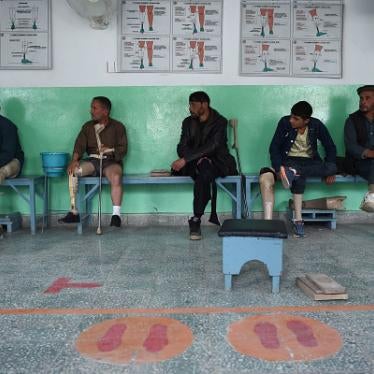The overall record of compliance with the Mine Ban Treaty by States Parties is very impressive. There have been no allegations of use of antipersonnel mines in many years and just one confirmed instance of use by a State Party—Yemen, nearly a decade ago. There has been no production, no trade, and only a small number of states missing their four-year deadline for stock destruction.
More than 30 States Parties have declared themselves mine-free and the needs and rights of victims are being met to a far greater degree than two decades ago.
The global stigma is strong and has resulted in de facto compliance by most States not party. In recent years, only one government armed force has used antipersonnel mines—Myanmar.
But, there are still serious compliance concerns, as States Parties recognized last year at the Review Conference and in the Oslo Action Plan. Indeed, there are concerns with respect to Article 3 on mines inappropriately retained for training and research, Article 4 on missed stockpile destruction deadlines, Article 5 on delayed action or non-action on mine clearance, Article 7 on the low rate of transparency reporting, and Article 9 on lack of national implementation measures.
In addition, with respect to compliance with the Mine Ban Treaty norm, there is ongoing use by non-state armed groups, especially use of improvised antipersonnel mines which are banned by the Treaty. Too often such use is not being condemned and opposed by States Parties.
Before looking further into each of these categories of concern, I would like to review what States Parties agreed to in November. In recognition that compliance issues extend beyond potential use by States Parties, the mandate of the Committee on Cooperative Compliance was expanded to explicitly include Articles 7 and 9, as well as “to also address all matters under Article 1.2 ….” Our understanding is that by invoking Article 1.2, the Committee now has responsibilities under Articles 3, 4, and 5 as well.
Moreover, in Action #49 of the Oslo Action Plan, the President is given a new role to play in ensuring compliance with Articles 3, 4, and 5. This has been described by some as an “early warning mechanism.” The action point states, “If no information on implementing the relevant obligations [of Articles 3, 4, or 5] for two consecutive years is provided, the President will assist and engage with the States Parties concerned….”
With the expansion of the roles of the President and the Committee on Cooperative Compliance, States Parties are in a much better position to deal with implementation and compliance concerns at an earlier stage and more effectively.
With respect to Article 3, many States Parties are retaining mines under the Article 3 exception, but are not utilizing the mines for the permitted research and training purposes. As this continues to be the case year after year after year, it appears that the mines in fact are simply being stockpiled. As a matter of compliance, these states should either utilize the mines as permitted, or destroy them urgently. A total of 44 States Parties have not consumed any retained mines or provided any updated information for at least two consecutive years. Fourteen States Parties have not consumed any retained mines for at least 10 years, and four have not consumed for 16 years.
With respect to Article 4, Greece and Ukraine remain in violation of the Treaty for their ongoing failure to complete the destruction of their stockpiles LONG after their deadlines, 12 and 10 years respectively.
With respect to Article 5, there are at least six mine-affected States Parties that have not reported information on implementation of Article 5 for two or more years. In addition, there are instances when State Parties have been granted mine clearance deadline extensions, but then undertaken little to no action to meet the new deadline. It would appear that such non-action or non-implementation is against the objectives and purposes of the Treaty, and should be addressed as a compliance matter. There are also situations where little to no clearance has occurred around some military installations, raising the question of possible military benefit from the emplaced mines. Another compliance issue is the failure of some states to submit extension requests on time, or to submit at all when faced with new contamination.
On Article 7, the level of compliance with the obligation to submit an annual transparency report has fallen to an embarrassing all-time low of 34%. Sixty States Parties have failed to submit a report since the Third Review Conference in 2014. Notably, some states with key outstanding obligations such as clearance are failing to submit. Fifteen States Parties with clearance obligations did not submit a report in 2020 covering 2019.
Similarly, too many States Parties have failed to enact appropriate national implementation measures as required by Article 9. There are more than 50 States Parties without national measures in place. The ICBL believes that new, stand-alone national legislation is the best way to meet the Article 9 requirement. Action #50 of the Oslo Action Plan calls on states to urgently undertake and report on national measures by the 20th Meeting of States Parties.
With respect to the Mine Ban Treaty norm, it appears Landmine Monitor will identify use of antipersonnel mines, usually of an improvised nature, by non-state armed groups in at least five countries in late 2019/2020, with the most notable new use being in Libya.
These various compliance concerns are not new. They are long-standing, and States Parties have wisely begun to develop new approaches to deal with them. The key now will be dedicated and sustained attention from the President, the Committee on Cooperative Compliance, and all States Parties.
Thank you.








